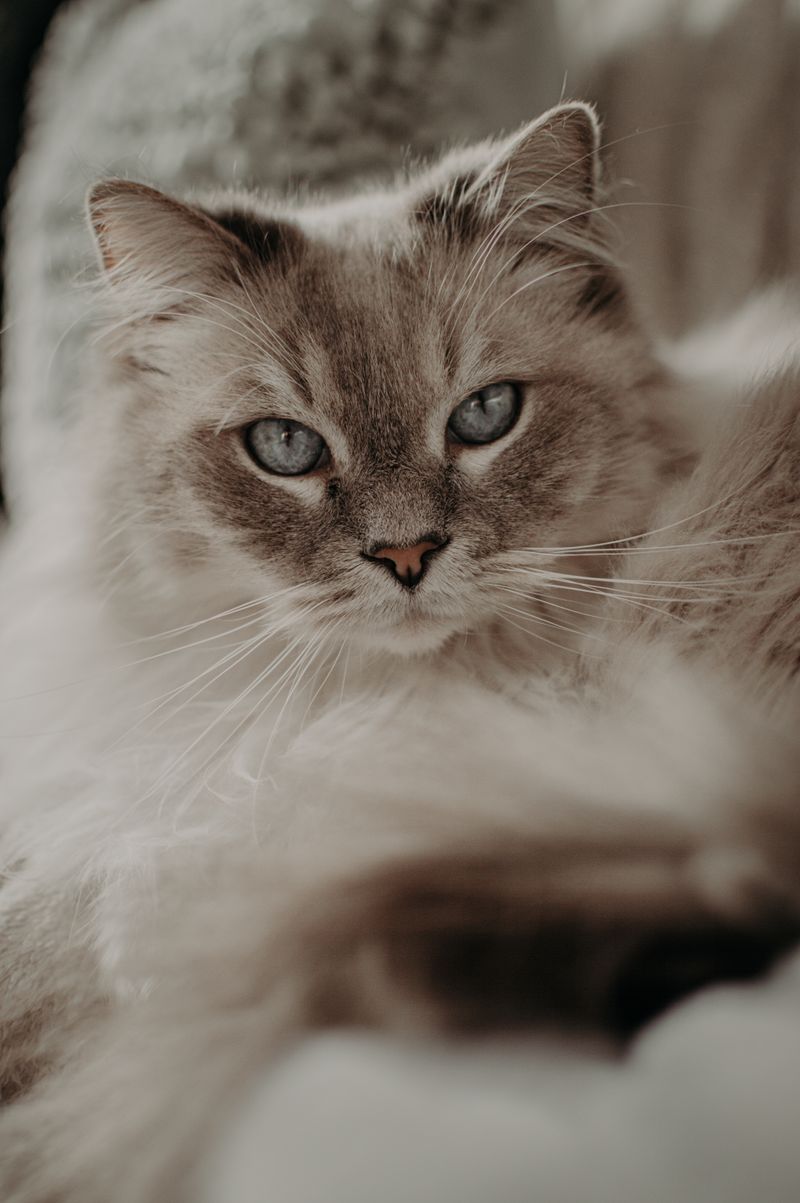How old is your cat in human years?
Many pet owners consider their animals to be like children, and it’s not uncommon to love them as such. But have you ever wondered how old your cat would be if they were human? Well, it turns out that cats age quite differently from humans, and your furry friend may be older than you think.
The case of Flossie
Flossie, a British tortoiseshell cat, holds the title for the oldest living cat, at the age of 27. While 27 may not sound particularly old for a cat, in human years, Flossie is actually about 120 years old. This disparity in aging patterns between cats and humans is due to several factors, and it’s important for cat owners to understand them in order to better comprehend their pet’s life stage.
Aging in cats
According to Purina, the first year of a cat‘s life is equivalent to 15 years of a human’s life. So, when your feline friend celebrates their first birthday, they would be old enough to obtain a driver’s permit if they were human. In the second year, cats age another nine human years, making them 24 years old on their second birthday. After that, each year adds four more years in human terms.
For example, if you’ve had your cat for 10 years, they would be approximately 56 years old in human years. If your cat is older than 21, you can add four years for every additional year to determine their current age.
Factors affecting a cat‘s life span
While the age conversion may give you a rough idea, it’s essential to understand that a cat‘s life span can vary based on various factors. Nutrition, lifestyle, preventative measures, breed, and genetics all play a significant role in determining how long a cat will live.
Indoor cats tend to live longer than outdoor cats due to the protection they receive from harsh weather, parasites, predators, and vehicles. If you are unsure about your cat‘s actual age, it’s always a good idea to consult with your local veterinary clinic for a more accurate assessment.
Editorial: The Aging Patterns of Feline Companions
The concept of equating cat years to human years is an interesting endeavor. It allows us to better understand the life stages of our feline companions and appreciate the time we have with them. However, it is vital to remember that this conversion is merely an approximation.
Cats have distinctive physiological and biological differences compared to humans, which affect their aging process. While it may be fun to think of our cats as ageless creatures, like Peter Pan or vampires, the reality is that they do go through the aging process, just at a different pace.
Understanding the aging patterns of cats is not just a matter of curiosity; it has practical implications for their well-being. As our feline friends advance in age, they require different levels of care, from diet adjustments to increased veterinary visits. Recognizing their stage of life helps us meet their needs and provide them with the best possible quality of life.
It is also important to note that cats can live well beyond the average life span of 13 to 17 human years. The case of Flossie, the 27-year-old cat, is a testament to this fact. By taking necessary measures such as providing proper nutrition, a safe and stimulating environment, regular veterinary care, and love and attention, we can help our cats defy the odds and enjoy extended and healthy lives.
Advice for cat owners
If you are a cat owner, there are several steps you can take to ensure the well-being and longevity of your furry friend:
1. Provide a balanced diet:
Consult with your veterinarian to determine the appropriate diet for your cat‘s age and specific needs. Quality nutrition plays a crucial role in their overall health and can contribute to a longer life.
2. Create a safe environment:
If possible, keep your cat indoors to protect them from potential dangers such as traffic, predators, and harsh weather conditions. Provide them with engaging toys, scratching posts, and a comfortable resting area to keep them mentally and physically stimulated.
3. Regular veterinary care:
Ensure that your cat receives routine check-ups, vaccinations, and preventative treatments for parasites. Regular veterinary visits help catch any potential health issues early on and can extend your cat‘s life expectancy.
4. Emphasize companionship and love:
Cats are social animals and thrive on human interaction. Spend quality time with your cat, offer them plenty of affection and play, and create a strong bond. This emotional support not only contributes to their happiness but can also enhance their overall well-being.
Conclusion
Understanding a cat‘s age in human years can provide valuable insights into their life stage and ensure that they receive the appropriate care and attention. While the age conversion is not an exact science, it serves as a helpful tool for cat owners to better comprehend their feline companions’ aging process.
By taking proactive measures and providing a nurturing environment, we can help our cats live longer, healthier lives. Our furry friends bring joy and companionship into our lives, and it is our responsibility to give them the best possible care throughout their journey.

<< photo by Amber Janssens >>
The image is for illustrative purposes only and does not depict the actual situation.
You might want to read !
- Hydro One Grants $25K to Live Love Louder Muralists in Support of Community Art
- Labor Dispute: Hydro Ottawa and Union to Restart Negotiations
- Bayern Munich’s Secret Conversation Revealed: Fabrizio Romano Spills the Beans
- Krispy Kreme’s Sweet Deal: A Dozen Donuts for 86 Cents to Mark 86th Anniversary
- Krispy Kreme’s Sweet Birthday Surprise: Irresistible Doughnut Deal
- “Top 10 Hilarious Cat Names That Will Make You LOL”




